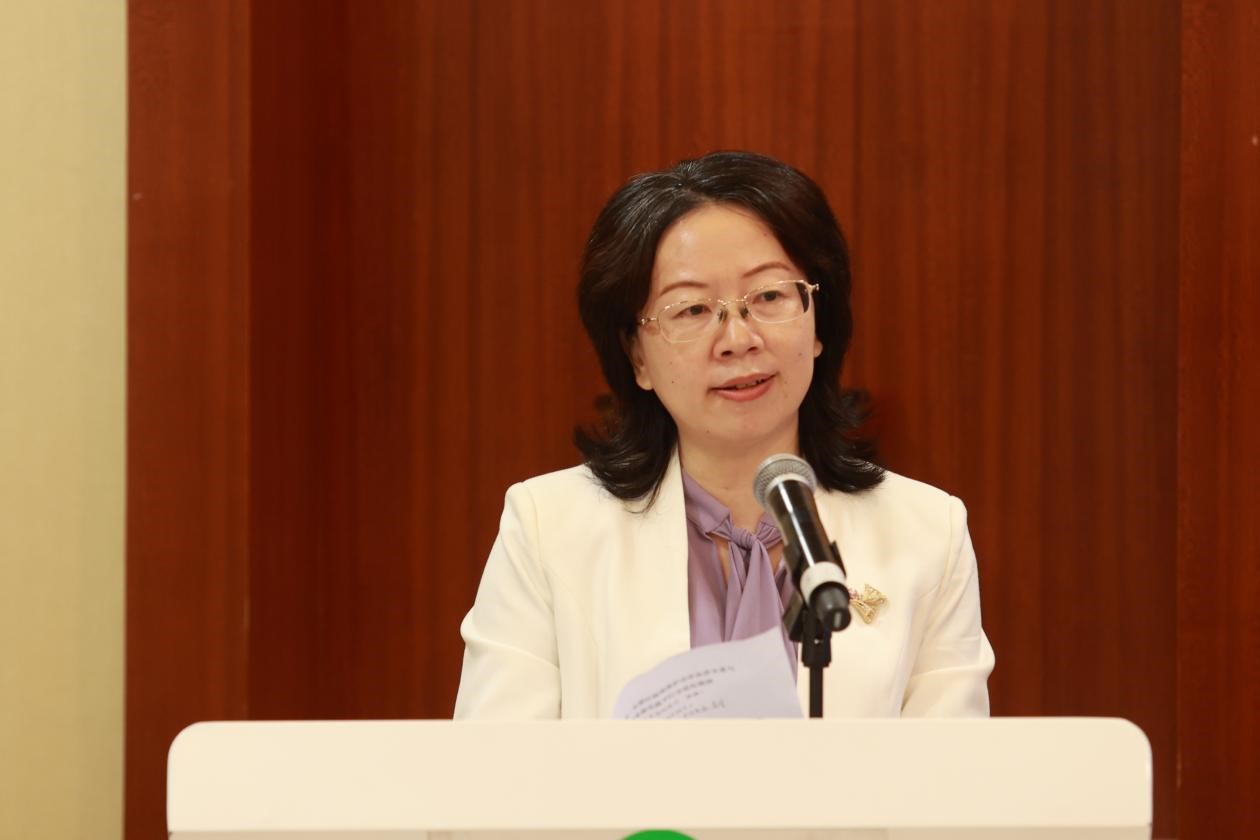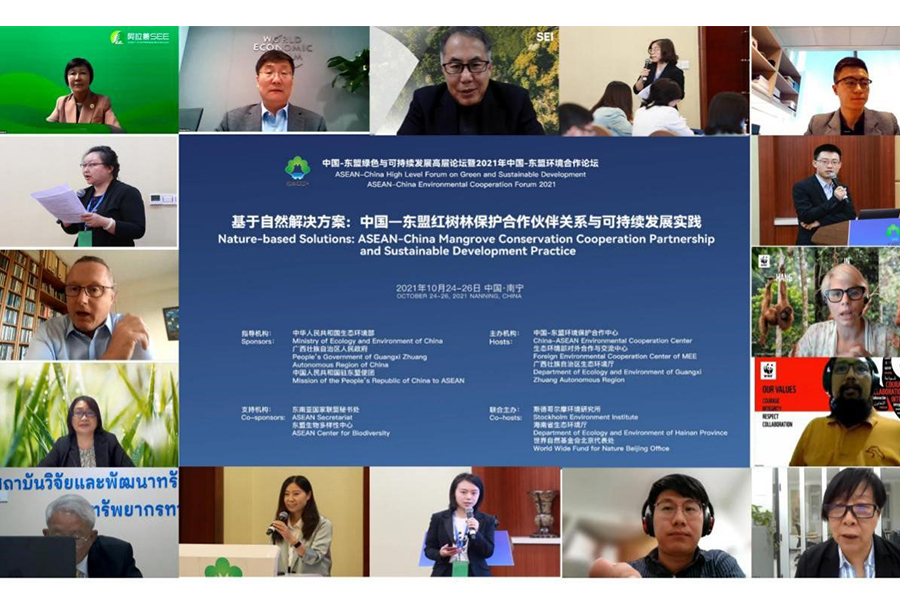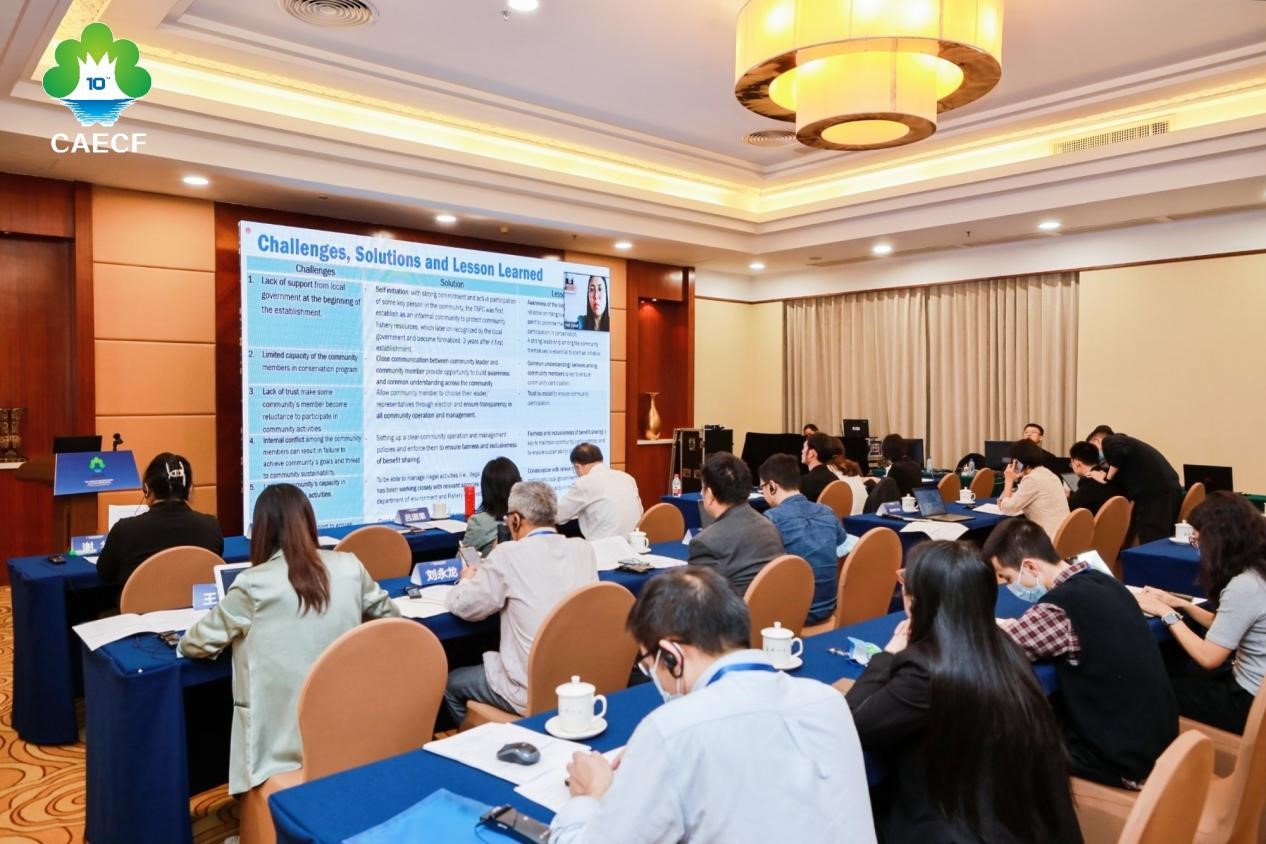On October 26, 2021, Nature-based Solutions: ASEAN-China Mangrove Conservation Cooperation Partnership and Sustainable Development Practice took place through a combination of online and offline modes in Nanning, Guangxi, as one of the sub-forums of the ASEAN-China High-Level Forum on Green and Sustainable Development and the ASEAN-China Environmental Cooperation Forum 2021. It was sponsored by Ministry of Ecology and Environment (MEE) of China, the People’s Government of Guangxi Zhuang Autonomous Region, and the Mission of the People’s Republic of China to ASEAN, hosted by the China-ASEAN Environmental Cooperation Center (CAEC)/ Foreign Environmental Cooperation Center of MEE, and the Department of Ecology and Environment of Guangxi Zhuang Autonomous Region, and co-hosted by the ASEAN Secretariat and the ASEAN Center for Biodiversity.
Pei Xiangbin, Counselor of the Department of Marine Ecology and Environment, Ministry of Ecology and Environment, China, San Oo, Deputy Director General / ASOEN Chair, Environmental Conservation Department, Ministry of Natural Resources and Environmental Conservation, Myanmar, Zhou Jun, Director of the Department of International Cooperation of the Ministry of Ecology and Environment, China, Li Min, Deputy Director General of the Department of Ecology and Environment of Guangxi Zhuang Autonomous Region, and Zhang Jing, Director of the Department of Ecology and Environment of Hainan Province attended and delivered opening remarks.

Pei Xiangbin said that China attaches great importance to marine environmental protection, solidly advances the protection and construction of beautiful bays, and establishes a land-sea integrated marine environmental governance system. He added that China has been actively involved in global and regional marine environmental governance in an effort to build a marine community with a shared future. By conserving the regional mangrove through Nature-based Solutions, China and ASEAN are expected to carry out more pragmatic cooperation in areas such as coordinated response to climate change, conservation of marine biodiversity, and improvement of the livelihoods of coastal communities.

San Oo introduced that Myanmar has pushed for green development through measures such as formulating the green development strategic framework, increasing green investment and finance, developing green low-carbon technologies, protecting and restoring ecosystems, and carrying out capacity building activities. He called for the participation of multiple stakeholders in the conservation and restoration of mangrove ecosystems as a key component of Myanmar’s ecological restoration.

Zhou Jun applauded the fruitful results that ASEAN-China environmental cooperation has yielded over the past 15 years. The launch of the ASEAN-China Year of Sustainable Development Cooperation fully demonstrates the importance that both sides attach to sustainable cooperation, he said, and the first phase of the Fifteenth meeting of the Conference of the Parties to the Convention on Biological Diversity has boosted the global determination to conservation biodiversity and injected new impetus into global environmental governance. He believed that Nature-based Solutions are highly compatible with China’s vision of ecological civilization and will play an important role in promoting ecosystem conservation and restoration and coping with climate change.

Li Min said that Guangxi, as the gateway and frontier of ASEAN-China cooperation, has carried out sound cooperation with ASEAN countries for many years, with stable channels and mature models gradually established for environmental cooperation. He hoped that this event can further bolster consensus, expand cooperation, and facilitate the establishment of mangrove conservation partnership between China and ASEAN.

Mrs. Zhang Jing said that aiming at high-quality development, Hainan has been working on the high-standard construction of a free trade port with Chinese characteristics and a national pilot zone for ecological civilization. She pledged that Hainan would make full use of its policy and geographic advantages as a new highland of China’s reform and opening-up to actively join in the establishment of mangrove conservation partnership and continuously promote relevant practices in sustainable development.

The meeting consisted of three components, “Nature-based Solutions: ASEAN-China Mangrove Conservation Partnership”, “ASEAN-China Good Practices for Mangrove Ecosystem Protection”, and “Nature-based Solutions: ASEAN-China Exploration of Pathways to Sustainable Agricultural Development”. Topics discussed in depth included the role of Nature-based Solutions in climate change adaptation and mitigation, biodiversity conservation, community livelihood improvement, and sustainable agricultural production and consumption; practices and cases of mangrove conservation and restoration; pathways to regional mangrove conservation and restoration for communities, financial institutions and other stakeholders; and prevention and control of marine plastic pollution. It was agreed at the meeting that stepping up the conservation and restoration of coastal ecosystems represented by mangroves would generate synergies in conserving marine biodiversity, protecting the well-being of coastal communities, and mitigating and adapting to climate change. It was highlighted that the conservation and sustainable use of mangroves requires the participation of multiple stakeholders, including government departments, financial institutions, the private sector, and the general public.

This sub-forum aims to facilitate the implementation of Framework of China-ASEAN Environmental Cooperation Strategy and Action Plan (2021–2025) and other relevant cooperation initiatives to further consolidate ASEAN-China consensus on cooperation in Nature-based Solutions to address climate change, enhance biodiversity conservation, and promote marine environmental governance.